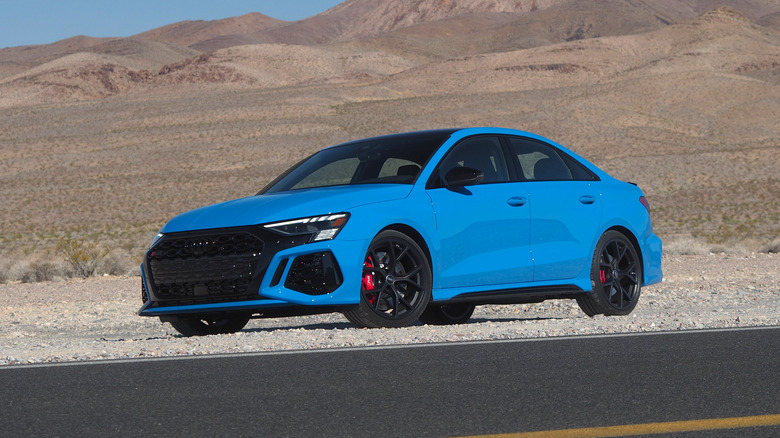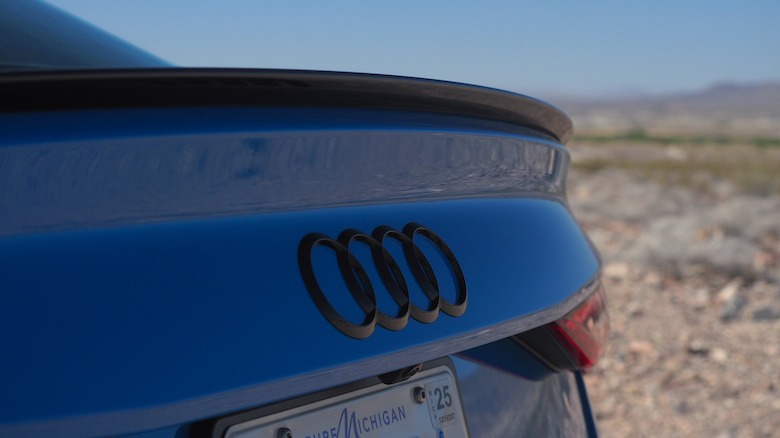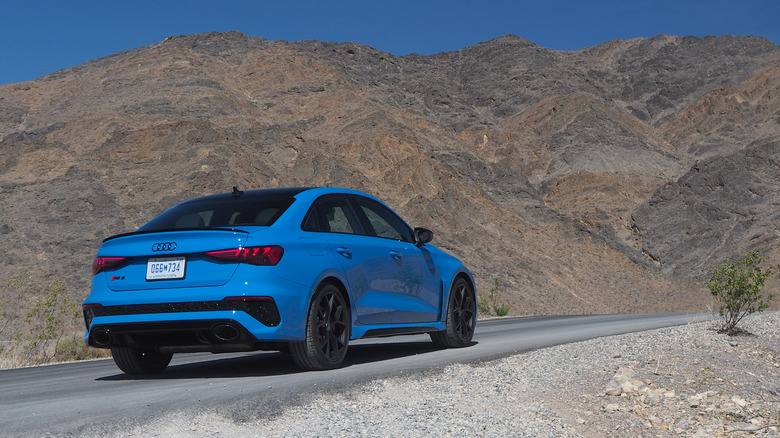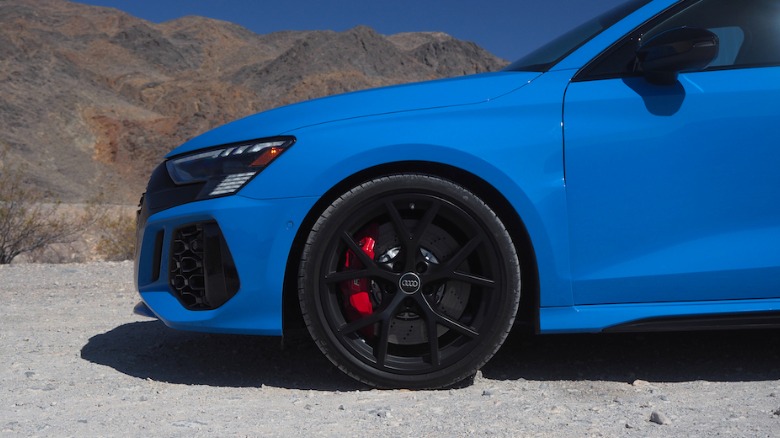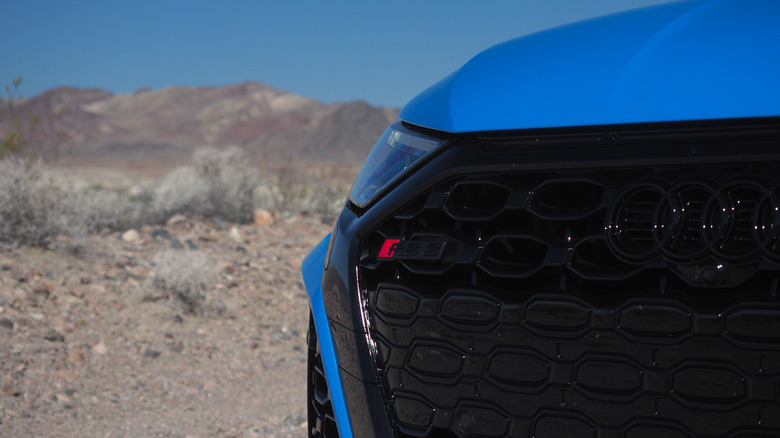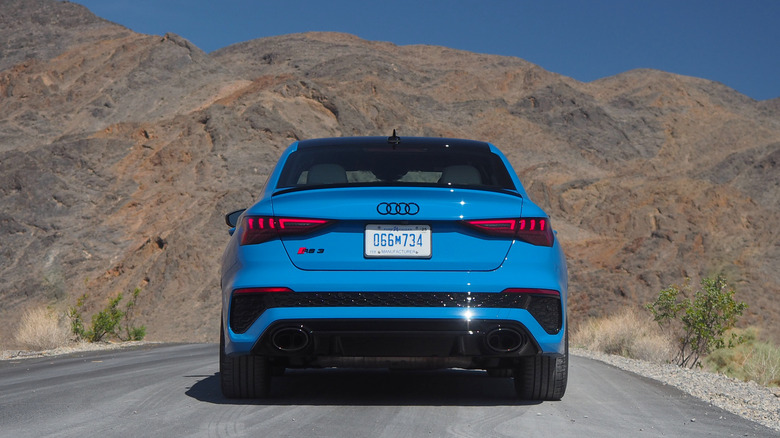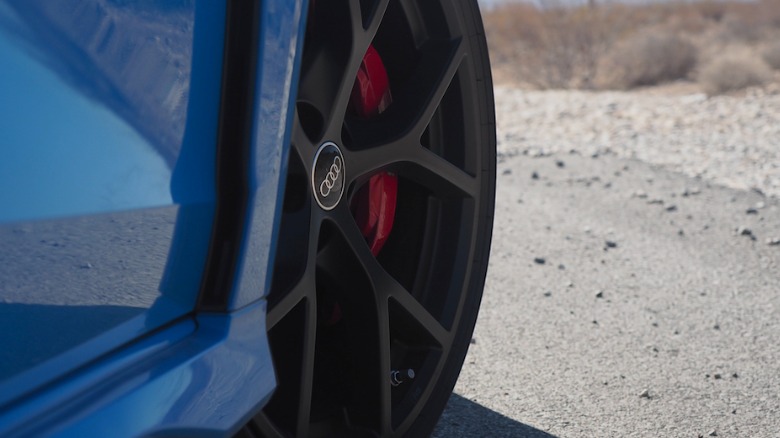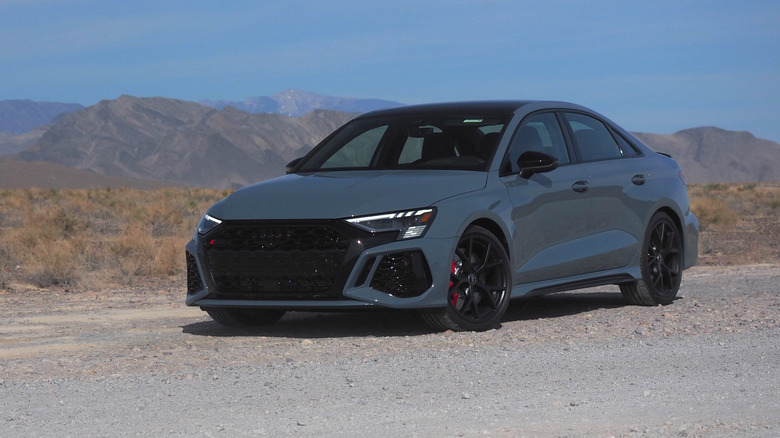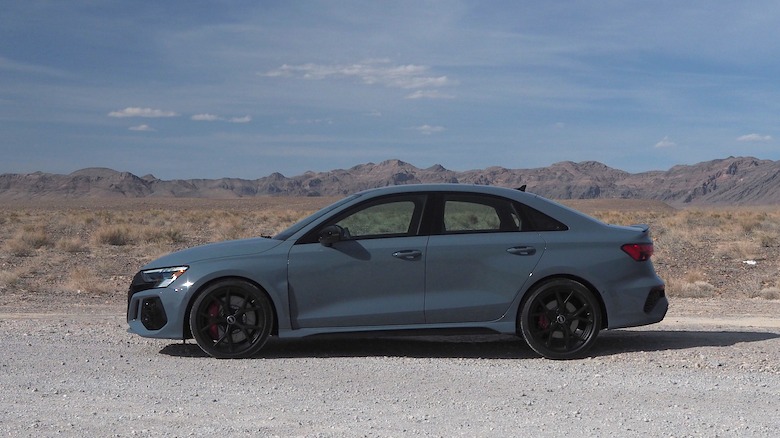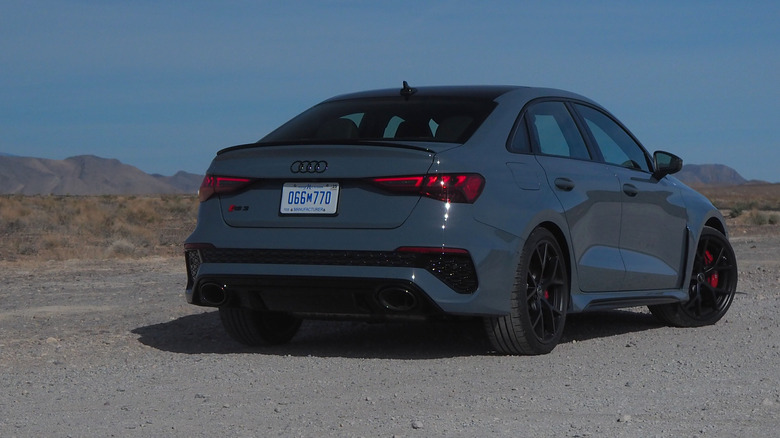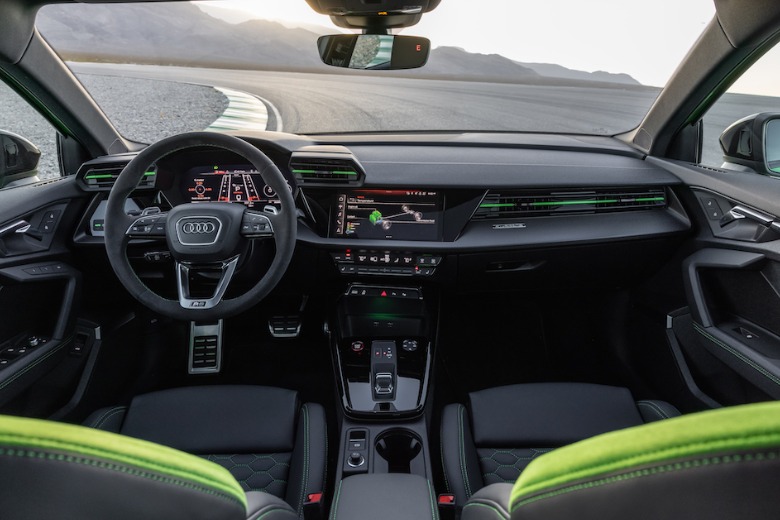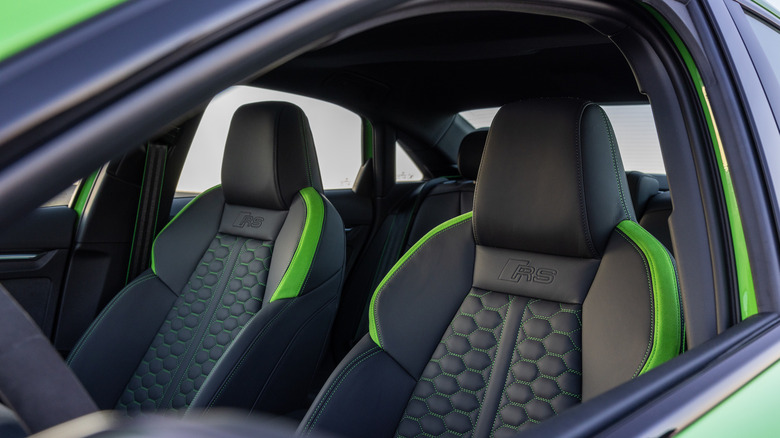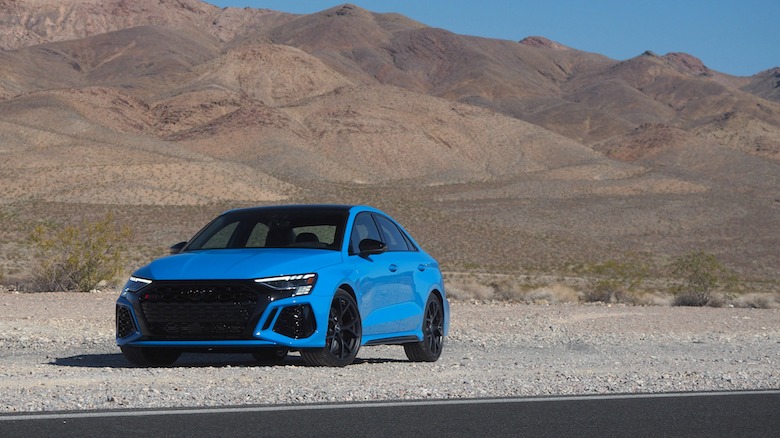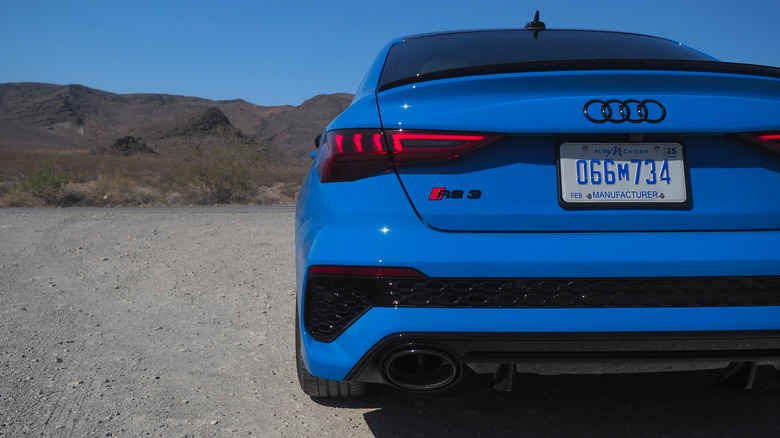2022 Audi RS 3 First Drive: Special, But Not How You Expect
The 2022 Audi RS 3's five-cylinder engine is practically a McGuffin. Not quite the full Hitchcockian distraction, no, but a false flag operation when it comes to what makes the new sports sedan particularly special nonetheless. Although the award-winning powerplant under the well-contorted hood is plenty interesting in its own right, what makes the second-generation RS 3 story is actually hiding away at the rear.
The enthusiast market has some intriguing options right now, more than you might think if your view of the new car segment is skewed by SUV after SUV. Certainly, more buyers are flocking to crossovers and the like than ever before — assuming, that is, they can find dealership stock and stomach the markups — but those in search of attainable thrills have some fascinating options.
The $40k 2023 Nissan Z will be one such example when it finally makes it to showrooms, and Audi's $58,900 RS 3 sedan another. Each attempt to strike a balance no supercar ever has to face, pleasing keen drivers without simultaneously pricing them out of play. Audi would like us to believe it's the five-cylinder engine that gives the 2022 RS 3 its charm, there, but you should not be fooled.
Five cylinders of singing distraction
Certainly, the 2.5-liter five-cylinder TFSI engine is no disappointment. Its 401 horsepower and 396 lb-ft of torque are positively plentiful — the US, for once, gets more ponies than the Europeans do, the American-spec RS 3 having 7hp more than theirs — and its odd cylinder count is more than just an engineering flourish. Firing in a 1-2-4-5-3 order gives the engine a distinctively syncopated sound to go with its punch, and the active exhaust system only liberates that.
It's enough for a 3.6 second zero to 60 mph time, making the 2022 RS 3 legitimately rapid, and with the $5,500 Dynamic Plus Package it unlocks a 180 mph top speed. Quite frankly the standard 155 mph limiter is heady enough, but Audi's price tag on bragging rights is unexpectedly affordable.
That's doubly so when you consider that package also includes a fancy carbon engine cover and ceramic front brakes. They pinch larger 15-inch discs between the six-piston calipers compared to the 14.8-inch iron versions that come as standard. They also shed 22 pounds of unsprung weight. Either way, the 12.2-inch rear wheels have single-piston calipers, and Audi says it delivers 20% better cooling and 15% more pad contact area all-round than on the first-generation RS 3 sedan.
Forget the engine, the secret weapon hides at the back
There is, undoubtedly, plenty to enjoy about the RS 3's engine, and I could understand you being confused about how I might seem to be dismissing it. The reality is that, though power and responsiveness are grand — and vital — for a performance vehicle, what makes the difference is how well all that makes it to the asphalt. It's there that the new sports sedan's secret weapon makes its presence clear.
That's the standard RS Torque Splitter, Audi-speak for an electronic multi-disc clutch on each rear driveshaft. With it, the RS 3 can selectively distribute engine torque to the left or the right side, courtesy of some drive mode trickery and a couple of fast-spinning worm gears. It all happens automatically, in the background, and it unlocks honest-to-god torque vectoring.
Torque vectoring feels like magic
Torque vectoring is a fairly simple concept: adjust the power so that the wheel on the outside in a corner gets more than the wheel on the inside. That helps propel the vehicle around the turn, avoiding oversteer or understeer, and making for a tighter maneuver overall. While the goal might be straightforward, though, there are actually quite a few ways to achieve torque vectoring. The easiest is brake-based: slowing the inside wheel in the corner. Problem with that, is you end up slowing the car in the process.
The RS 3's system could be called "proper" torque vectoring, in contrast. Rather than artificially slowing one side of the car, it actively pushes the engine torque to where it can be most effectively applied, based on things like longitudinal and lateral acceleration, the steering and yaw angles, and the throttle position and current gear. The same wheel speed sensors that the ESC system relies upon also feed the RS Torque Splitter with data from all four corners.
How that benefits you depends on your focus, and you define that with the RS 3's drive modes. Comfort adjusts power through the standard Quattro all-wheel-drive to the front wheels, while Auto balances it front to rear; Dynamic pushes power to the rear wheels as much as possible. Within that final mode, there are three RS settings. RS Performance targets the best possible cornering on the track, aiming for neutral turns, and with a choice of Comfortable or Dynamic suspension modes to suit bumpy or smooth courses.
RS Torque Rear, meanwhile, goes in the complete other direction. It's basically drift mode, a first for Audi, and it uses Quattro and the RS Torque Splitter system to push power to a single rear wheel. Assuming you have the space to (safely) play, it's charmingly easy to provoke the sedan into big, silly spins. Finally, an RS Individual mode allows you to tweak the settings yourself.
On road or track, a bonafide joy
Out on the track, you feel the benefits from the get-go. There's a real sense of the RS 3's rear pulling around you: turns just get a little tighter, a little more controlled than they feel like they ought to. Driving an all-wheel-drive sports car already tends toward that sensation of being planted and poised; RS Torque Rear seems to tweak the sedan's rotation point like there's a big, powerful hand shoving the rear around in the most helpful direction.
It's not a cold or clinical sensation, though, and neither does it feel artificial. Aggressive turns, unsurprisingly, unlock the most obvious impact of the system, and in the process can force a recalculation of just where your limits as a driver might be. In more sweeping bends, though, it all contributes to an overall sense of the RS 3's general precision, as does the RS Sport Suspension Plus with Dynamic Chassis Control. That replaces the old RS 3's magnetic ride system with one that's far more granular.
I'm an average track driver, but the Audi left me feeling better than I know I really am. The same goes out on the road, where — though you obviously can't quite test the limits as you might on a safe, controlled race course — you can still sense the torque vectoring at play. That came as a pleasant surprise, given the reality that many performance vehicles demand license-losing speeds before they start getting into their stride.
In a straight line, the yowl of the five-cylinder translates to an impressive pace. Really, though, you're always waiting for the next corner to arrive, and marveling at how much less braking you need compared to what your gut first tells you. The optional ceramic front brakes avoid track fade, but I preferred the feedback from the standard iron anchors, and they're more than up to the task of everyday driving (even if enthusiastic). In contrast, the optional Pirelli P Zero Trofeo R semi-slick motorsport rubber is both rewardingly road-legal and, at $450 from the factory, a steal.
Generously equipped out of the gate
The optional tires are one of a handful of extras that Audi offers, on top of a fairly generous standard spec for the 2022 RS 3. Outside, the aggression has been dialed up over the first-generation car: an oversized grille and distinctive front fenders with big, functional cooling vents. The wheel arches are flared, too, and at the back, there's a gloss black spoiler to go with the twin exhausts. 19-inch 5-Y-spoke wheels in black with a graphic print are standard; the $750 Black Optic Plus package swaps them for handsome matte black and throws on a contrast black roof.
Audi has been leading the pack in terms of headlamp gadgetry, and the RS 3 is no different in that respect. It debuts RS-specific daytime running light animations: start the car up, and 15-pixel clusters spell out "R-S-3" and show a checkered flag. Gimmicky? Maybe a little, but it's fun with it.
Inside, meanwhile, this new car feels more grown-up — and more "Audi" — than its predecessor. The Virtual Cockpit is standard, with custom RS graphics, as is a 10.1-inch MMI Touch infotainment system with wired Apple CarPlay and Android Auto, and a sports steering wheel with dedicated RS mode buttons. Consider me overjoyed to see real zinc paddles behind that wheel, too, rather than humdrum plastic, though the odd little transmission shifter is head-scratchingly stumpy.
Inject a little color
The standard leather sports seats are comfortable and supportive, with sufficient grip for the track without constantly reminding you of your love handles the rest of the time. Depending on the exterior color — where there's a choice of eight finishes, including the shouty Kyalami Green and Python Yellow — the $1,500 RS Design Package adds some Micrommata Green highlights across the dashboard, doors, and seats. Even if I suspect most will opt for the more sober finishes from Audi's palette, I'm happy to see a few glitzier options for those who are less risk-averse.
Adaptive cruise control with lane guidance, lane departure warnings, LED front and rear lights with dynamic turn signals, and Park Assist are all standard. So, too, is Audi Pre Sense Front; Audi side assist with rear cross-traffic assistance and exit warnings are a $350 option.
Cough up $2,750 for the RS Technology Package, and you get Audi Connect Plus, navigation, a Bang & Olufsen audio system, and traffic sign recognition. It also includes a useful head-up display, though polarized sunglasses can make that trickier to see on bright days.
2022 Audi RS 3 Verdict
You could make a very solid argument that the 2022 RS 3 occupies the sweet spot of Audi's range right now. As with its predecessor, it combines speed and comfort, but now with an aesthetic far more in-keeping with its personality. Having discontinued the M2 coupe, BMW's closest alternative is the M3 sedan, but that starts around $11k more than the Audi. Mercedes-AMG's CLA 45 Coupe (which is actually a four-door) gets closer on price, but is down on power and doesn't have the trick torque vectoring.
It's that particular party trick that leaves the new RS 3 feeling so special. Performance, sure, but in a car that's playful with it. Even if you don't get to a track day — and you really, really should — the eager Audi can dance just as neatly out on regular roads, and it's a talent that overshadows even its unusual engine.
